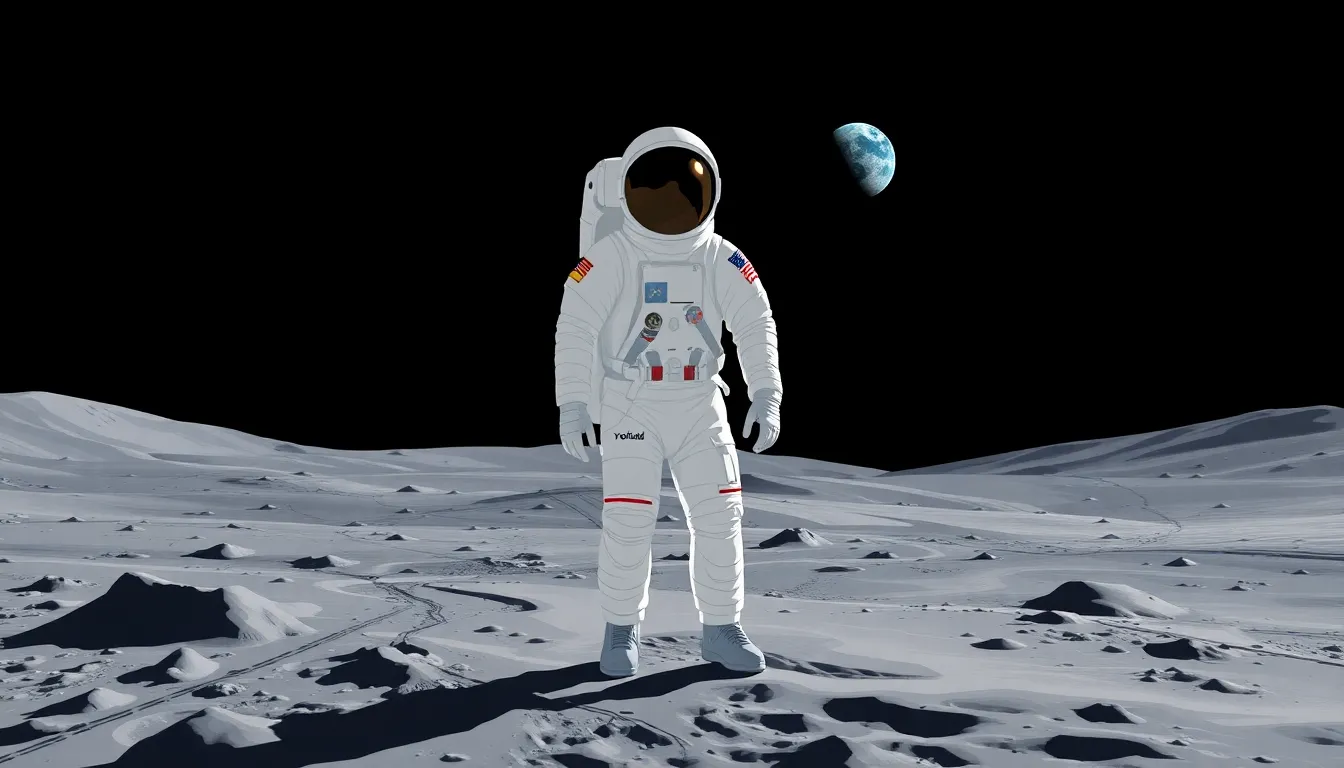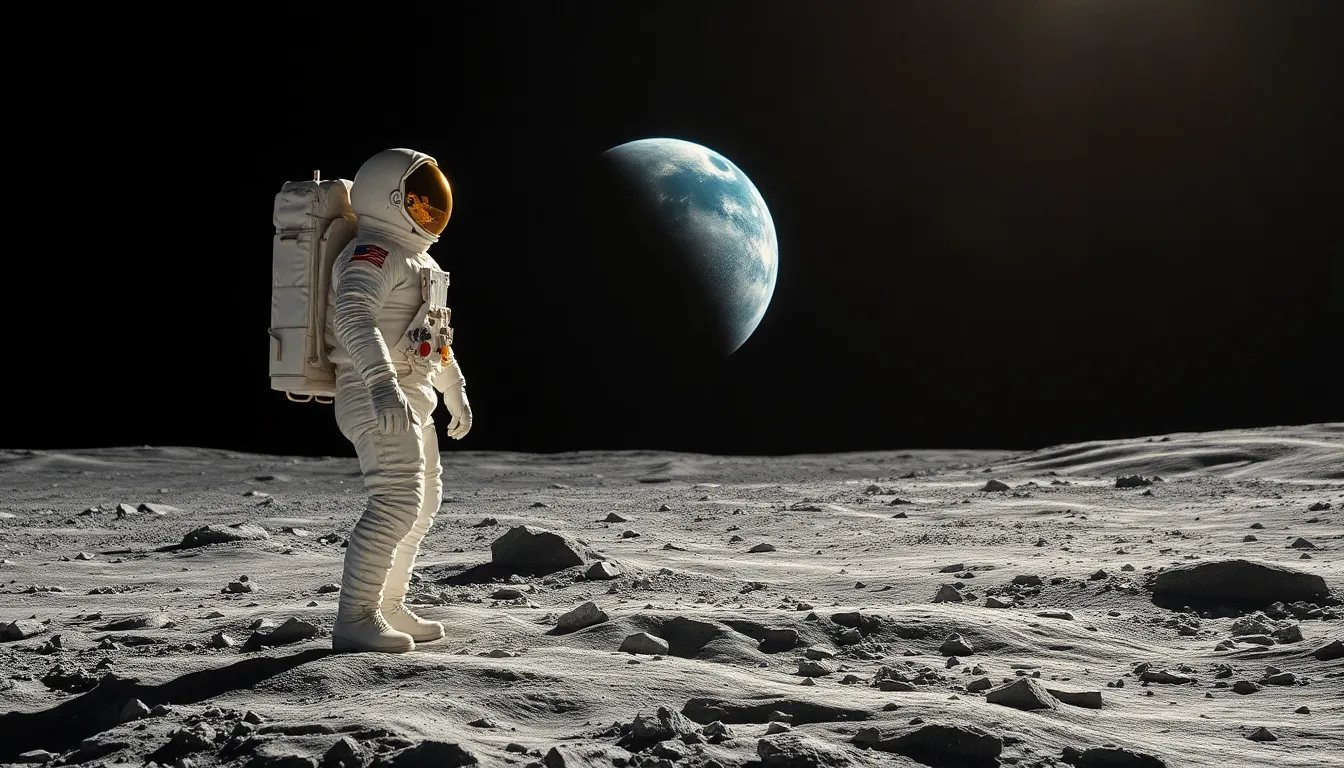Space: the final frontier, or at least the final stop for most of our current spacecraft. With our technology, it might feel like we’re stuck in a cosmic traffic jam, staring at the stars and wondering how far we can actually go. While dreams of interstellar travel dance in our heads, the reality of our current capabilities is a bit less glamorous.
Imagine strapping into a rocket and blasting off into the great unknown, only to realize you’re still just a hop, skip, and a jump away from the nearest planet. From the Moon to Mars and beyond, the limits of our reach are a fascinating blend of ambition and reality. So, how far can we really travel in space with today’s tech? Buckle up as we explore the distances we can cover and what it means for our cosmic aspirations.
Table of Contents
ToggleOverview of Space Travel
Space travel presents a mix of potential and limitation. While aspirations drive exploration, current technology confines humanity’s reach.
Historical Milestones
Significant strides mark the journey of space travel. In 1961, Yuri Gagarin became the first human to orbit Earth aboard Vostok 1. In 1969, the Apollo 11 mission successfully landed astronauts Neil Armstrong and Buzz Aldrin on the Moon, making history. The Voyager spacecraft launched in 1977, with Voyager 1 becoming the first human-made object to enter interstellar space in 2012. These events highlight humanity’s quest and ignite dreams for deeper exploration. Successful missions demonstrate increasing capabilities, yet each achievement underscores the vast distances still separating humans from other celestial bodies.
Current Missions and Technologies
Current technology drives several ambitious space missions. NASA’s Artemis program aims to return humans to the Moon by 2025, paving the way for future Mars missions. SpaceX’s Starship focuses on deep-space travel, targeting Mars missions as early as 2024. Additionally, the James Webb Space Telescope, launched in December 2021, expands understanding of the universe. These missions showcase advancements in propulsion and spacecraft design, though limitations such as radiation exposure and life support systems remain critical concerns. Investing in research and development continues to shape efficient ways to explore beyond Earth.
Distance Milestones in Space

Current space travel capabilities allow humanity to reach various celestial bodies within our solar system. Significant milestones illustrate the progress made in exploration.
The Moon
The Moon represents humanity’s closest celestial neighbor. Apollo 11 marked a historic achievement in 1969 when astronauts Neil Armstrong and Buzz Aldrin landed on its surface. Following that, subsequent Apollo missions further explored lunar geology and resources. Artemis aims to return astronauts to the Moon by 2025, paving the way for future lunar bases and scientific research. New technologies in propulsion and ascent may enable more efficient landings and extended missions. The Moon offers a valuable opportunity for testing life support systems, serving as a stepping stone for further exploration.
Mars
Mars stands as the next major target for human exploration. NASA’s Perseverance rover, launched in July 2020, seeks signs of ancient life and collects samples for future return. SpaceX’s Starship aims to conduct crewed missions to Mars as early as 2024, targeting long-term colonization possibilities. Challenges like radiation and resource utilization present hurdles that engineers are addressing. Mars’ similar day length and presence of necessary resources make it a promising candidate for establishing a human presence. Ongoing missions, such as MAVEN and Mars Reconnaissance Orbiter, continue mapping its atmosphere and surface characteristics, providing crucial data for potential colonization efforts.
Limitations of Current Technology
Current technology imposes significant restrictions on space travel, limiting humanity’s reach in the cosmos. Key issues include propulsion systems and life support systems.
Propulsion Systems
Propulsion systems determine the speed and efficiency of spacecraft. Chemical propulsion remains the most widely used method, relying on fuel combustion for thrust. Ion propulsion offers an alternative, using electricity to accelerate ions, but provides lower thrust levels. Moreover, reaching distant targets like Mars takes months or years, which limits mission opportunities. Current technologies easily fall short of achieving speeds necessary for interstellar travel, such as those proposed by theoretical concepts like the Alcubierre warp drive. Pragmatic assessments indicate that developing faster propulsion methods, such as nuclear thermal or solar sails, remains essential to enhancing travel distance.
Life Support Systems
Life support systems play a crucial role in sustaining human life during space missions. Current systems recycle air and water to support astronauts but rely on limited resources aboard spacecraft. For long-duration missions, such as those to Mars, developing more robust systems becomes vital for food, waste management, and oxygen regeneration. Closed-loop life support systems, capable of functioning independently, represent a significant focus in research. Innovations in bioregenerative technologies could provide sustainable solutions for future missions, allowing extended human presence beyond Earth. Thus, overcoming these limitations becomes crucial for successful exploration of more distant celestial bodies.
Future Prospects
Innovations in space travel continue to unfold. Significant advancements promise to enhance current technologies and extend humanity’s reach into the cosmos.
Advancements in Technology
Innovative propulsion systems are at the forefront of space exploration. Research into nuclear thermal propulsion shows potential for faster journey times to Mars and beyond. Advanced ion propulsion systems offer enhanced efficiency, albeit at slower speeds. Investments in solar sails could revolutionize long-duration missions, harnessing solar energy for propulsion. Other areas of development include life support systems, focusing on closed-loop technologies that recycle air and water. Successful implementation of these systems is crucial for sustaining life during interstellar missions. Together, these technological strides may pave the way for deeper exploration of distant celestial bodies.
Potential for Interstellar Travel
The prospect of reaching neighboring star systems intrigues scientists and engineers. A concept known as the Breakthrough Starshot initiative envisions using light sails propelled by powerful ground-based lasers to achieve up to 20% the speed of light. At this speed, a journey to Proxima Centauri could take around 20 years. Achieving such velocities represents significant challenges, including radiation protection and fuel efficiency. Moreover, advancements in physics, like warp drives and wormholes, capture imaginations while remaining theoretical. Continued research into propulsion techniques and material science could eventually unlock interstellar travel. With persistent investment and innovation, humanity’s quest to explore the universe might transcend our solar system.
Humanity stands at a pivotal point in its journey through space. While current technology limits travel to the Moon and Mars, innovative projects like the Artemis program and SpaceX’s Starship signal a commitment to pushing boundaries. The quest for faster propulsion methods and sustainable life support systems is crucial for future exploration.
As researchers continue to explore new technologies such as nuclear thermal propulsion and light sails, the dream of reaching neighboring star systems becomes more tangible. Continued investment in space research will ultimately determine how far humanity can travel. The journey has just begun, and with each advancement, the cosmos becomes a little closer to home.




